What is companion planting, and does it actually work? RHS Chief Horticulturist Guy Barter demystifies this popular method of growing
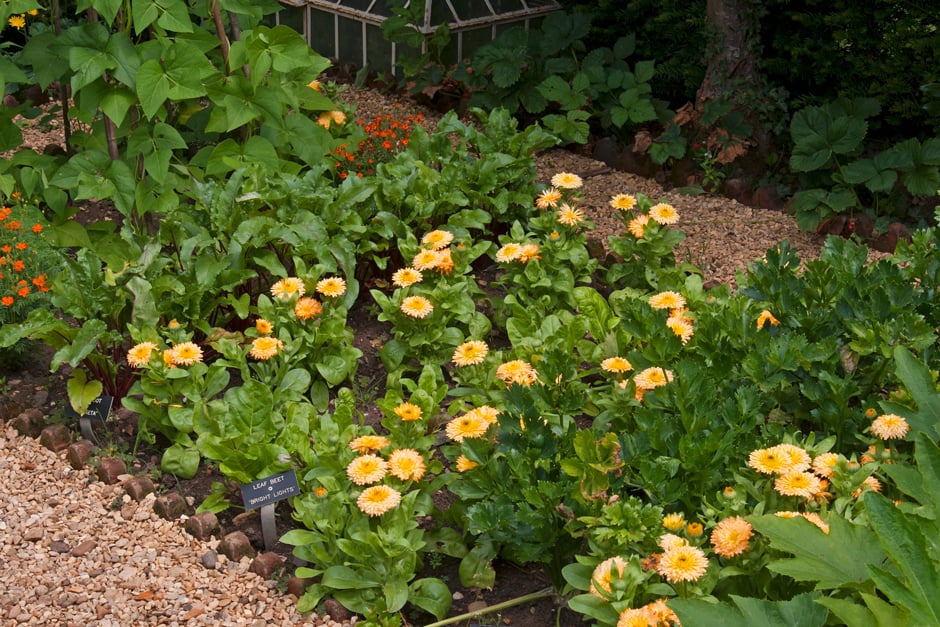
 Companion planting involves planting two or more plants together to form an association from which both or all plants benefit. A long-established and popular practice in the garden, companion planting can potentially create efficient use of space, reduce disease and deter unwelcome insects, and allow plants to provide each other with physical support.
Companion planting involves planting two or more plants together to form an association from which both or all plants benefit. A long-established and popular practice in the garden, companion planting can potentially create efficient use of space, reduce disease and deter unwelcome insects, and allow plants to provide each other with physical support.
Does companion planting really work?
Many benefits are claimed for companion planting, and it is likely that all of these benefits do exist, but not for every crop in every instance. Whether or not to invest time and materials in growing companions in the hope of helpful results is a matter of personal choice.
The ultimate aim would be to grow plants in productive combinations that are self-sustaining, like the plant communities found in nature. Companion cropping will work best in combination with other methods of boosting biodiversity and soil and plant health, such as mulching with homemade compost and reducing or avoiding digging.
The main benefits associated with companion planting fall into three main categories: improving space efficiency, deterring unwelcome insects and diseases, and creating self-supporting plant communities.
Companion cropping to use space efficiently
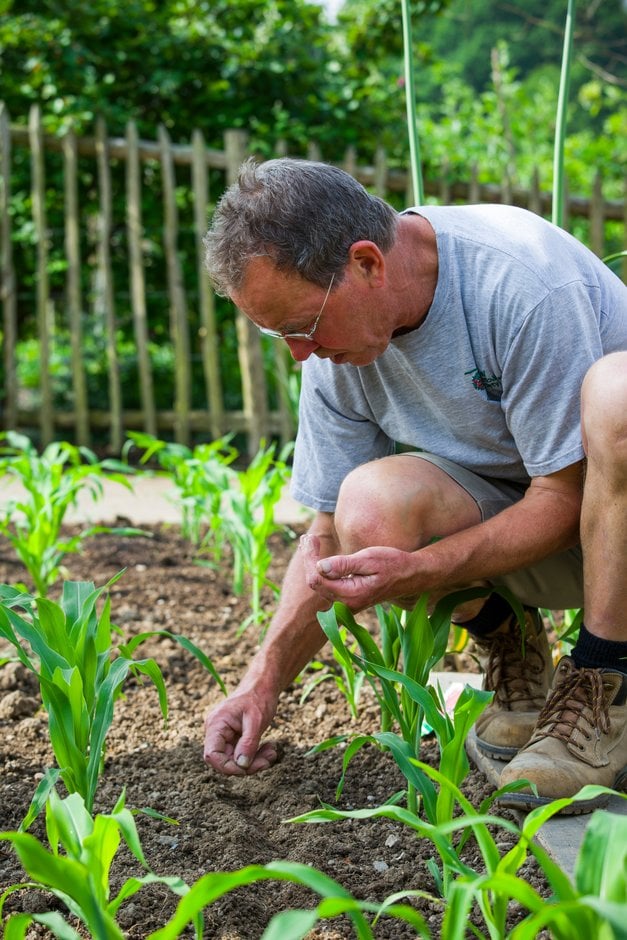 You can make the most of your space by planting or ‘intercropping’ fast-maturing plants such as lettuce and radish between bigger, slower-maturing plants, which are sown or planted at wider spacings that they will fill when mature – for example, Brussels sprouts or sweetcorn. The smaller plants will be harvested before the bigger plants overshadow them.
You can make the most of your space by planting or ‘intercropping’ fast-maturing plants such as lettuce and radish between bigger, slower-maturing plants, which are sown or planted at wider spacings that they will fill when mature – for example, Brussels sprouts or sweetcorn. The smaller plants will be harvested before the bigger plants overshadow them.
Efficient use of space can also extend underground, for example by planting deep-rooted carrots among shallower-rooted onions. Neither crop casts heavy shade, so there is little aerial competition. The scent of onions has been claimed to make it harder for carrot fly to find the carrots, and similarly for onions and their pest species.
Companion planting to deter pests and diseases
Failing the smell test
As well as carrot/onion combinations, other scented plants are also claimed to deter unwelcome insects. For example, coriander has been found to sometimes deter unwanted insects in crops of basil and parsley.
Some strawberry farmers plant garlic in growbags containing strawberries. The garlic is cut down and the chopped leaves spread on the growbags every two weeks. The scent of the garlic is proposed to repel aphids (greenfly). Rose growers sometimes plant garlic near roses in the hope of similar benefits.
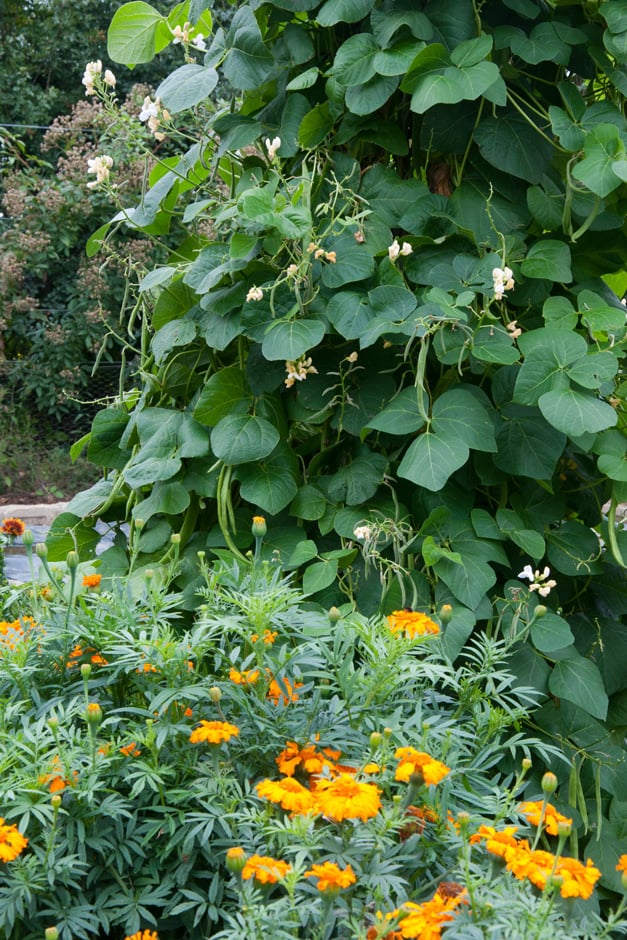 Tagetes (French marigolds) deter whitefly and thrips from tomatoes and other crops. Research has found the chemical limonene, which is secreted by the marigolds and is also found in citrus peel, is responsible.
Tagetes (French marigolds) deter whitefly and thrips from tomatoes and other crops. Research has found the chemical limonene, which is secreted by the marigolds and is also found in citrus peel, is responsible.
However, mixing tomatoes with other plants, without Tagetes, had a similar effect. Mixing plants can therefore reduce populations of unwanted insects compared to growing in monocultures (crop plants of a single type growing alone).
Hide and seek
For cabbage family plants such as cabbages and cauliflower, covering the soil by growing a layer of low-growing clover and trefoil makes the plants less visible to the cabbage root fly, protecting the crop.
Cabbage root fly finds its hosts by the appearance of the host plant’s leaves, but the clover/trefoil mixture disrupts the insect’s detection abilities. Keeping soil covered by plants, rather than leaving soil bare, is also best practice in terms of improving soil health and carbon storage.
Encouraging natural enemies
Another purpose of companion planting can be to attract insects that parasitise or prey on unwanted insects by providing nectar- and pollen-rich flowers. Growing alyssum (Lobularia maritima) with lettuce has been shown to reduce aphid populations, as its rich nectar and pollen attract beneficial insects that are natural predators of aphids.
Gardeners often plant insect-friendly flowers such as Calendula (pot marigolds) and nasturtiums near runner beans and tomatoes in the hope of similar effects.
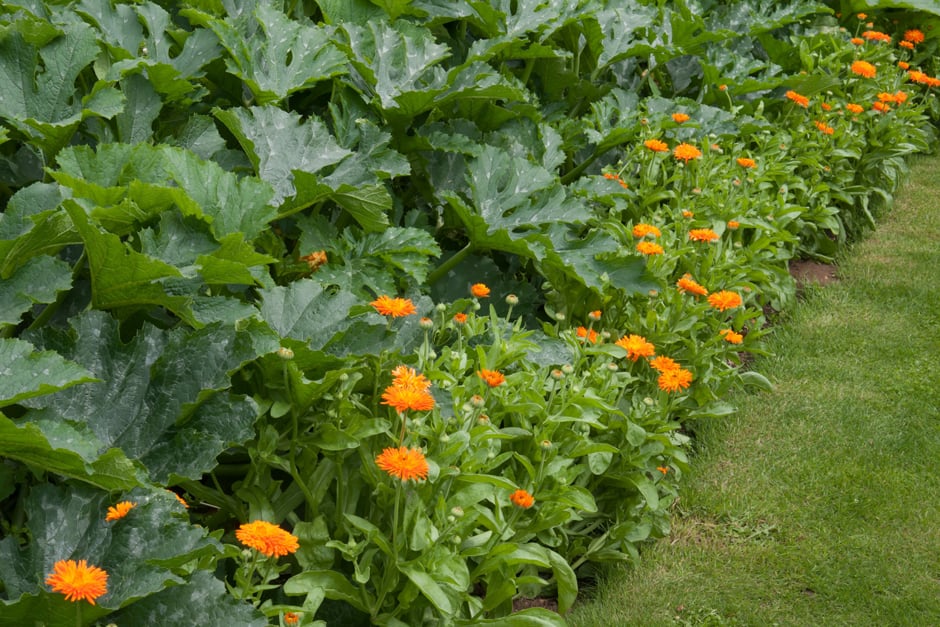 Mixed plant communities are more resilient
Mixed plant communities are more resilient
Ecology suggests that mixtures of plants, similar to those found in nature, are less susceptible to outbreaks of disease as well as damaging insects. Planting a greater number of different plants together can provide greater resistance to severe outbreaks.
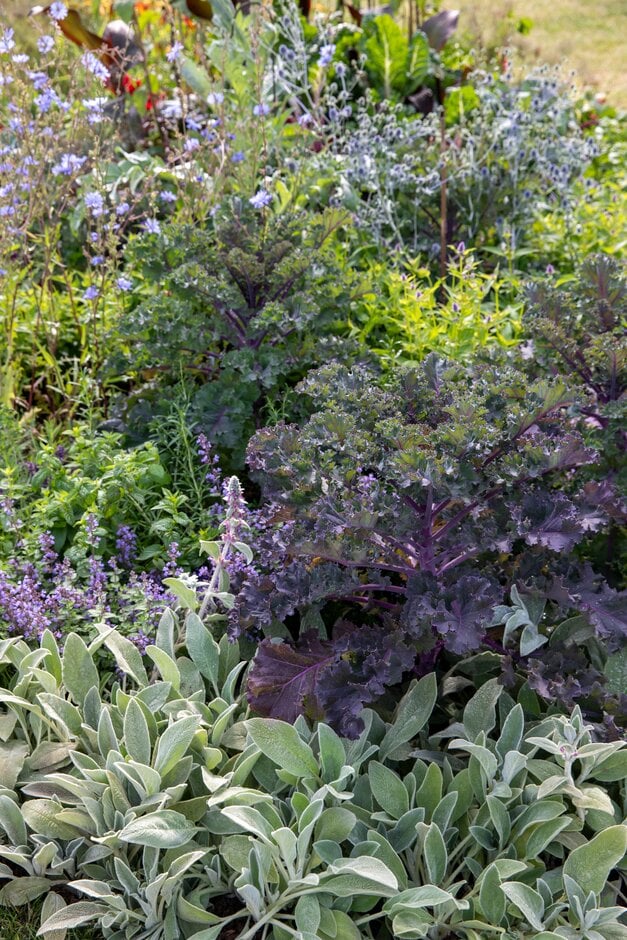 For example, rose borders containing solely roses seem, anecdotally, more prone to the variety of pests and diseases affecting roses than roses in mixed borders, where they are interplanted with a wide range of herbaceous flowers, grasses and other shrubs.
For example, rose borders containing solely roses seem, anecdotally, more prone to the variety of pests and diseases affecting roses than roses in mixed borders, where they are interplanted with a wide range of herbaceous flowers, grasses and other shrubs.
Similarly, vegetables grown in flower borders may escape the attention of unwelcome insects and even diseases. How disease reduction works is unclear, but it may involve spore interception by non-susceptible plants, or promoting a mixed microbe population that acts against disease-causing organisms.
Companion planting to provide mutual support
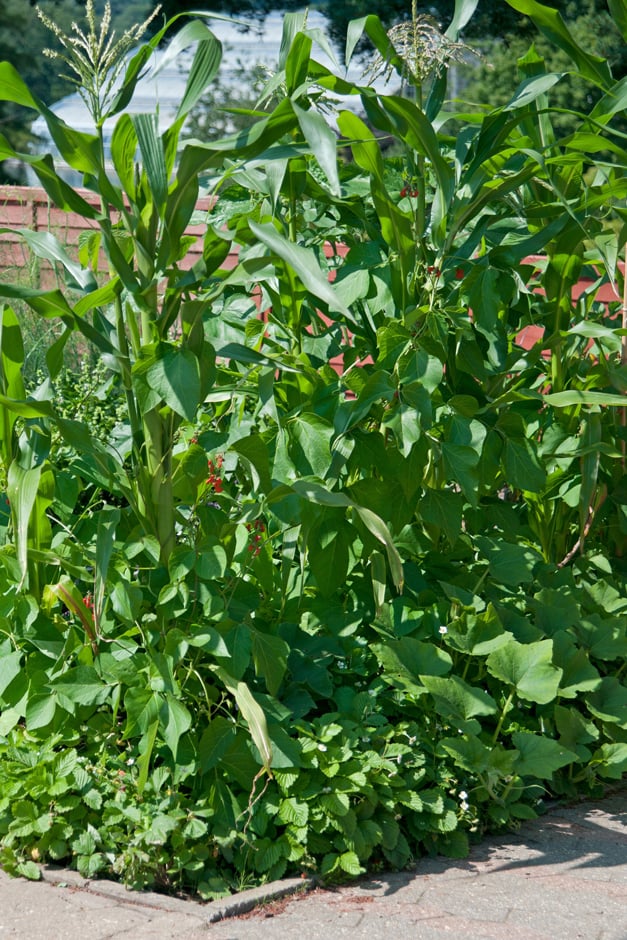 The ‘three sisters’ system of cropping maize, pumpkins and climbing beans is a well-known example of using companion planting to provide physical support.
The ‘three sisters’ system of cropping maize, pumpkins and climbing beans is a well-known example of using companion planting to provide physical support.
In this system the crops grow well, and very attractively, together if given sufficient space. The maize (sweetcorn) supports the beans, while the squash uses the space between the plants, shading the soil and suppressing weeds.
It’s not clear whether using this system produces greater yields than growing the individual crops grown separately, but it makes for an efficient use of space and means you don’t need to spend any time or use any other materials to stake your beans.
Permaculture and forest gardens are another form of companion planting. Edible crops are grown beneath and alongside fruiting shrubs and trees to create productive, self-sustaining gardens. The ‘layering’ creates shelter, albeit with some shade, and offers protection and support for wildlife, while also being fruitful.
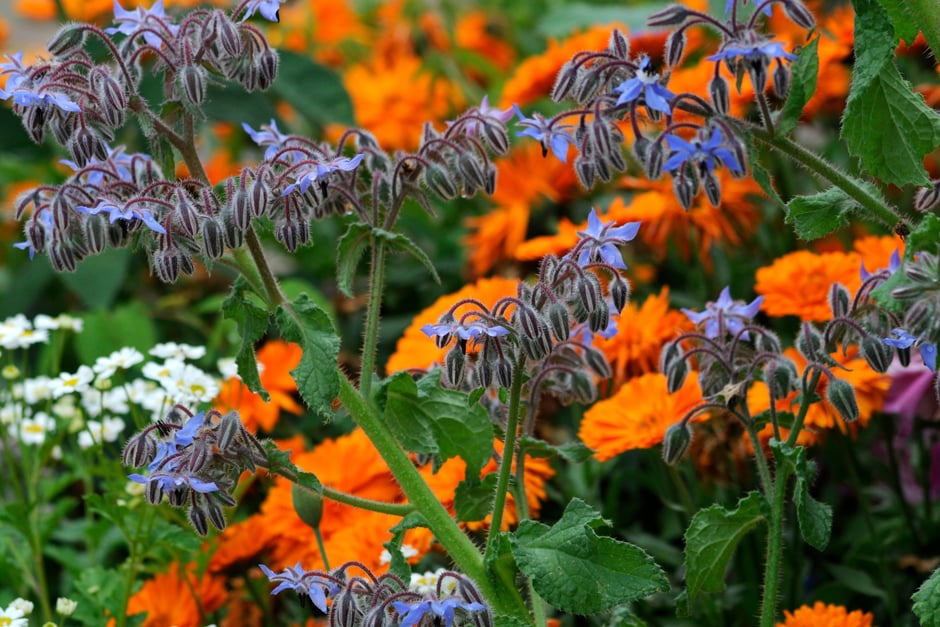 You may also be interested in
You may also be interested in
Pick of the crop
 Look for the RHS Award of Garden Merit (AGM) when buying vegetable seed or small plants. You can also download the RHS lists of recommended cultivars.
Look for the RHS Award of Garden Merit (AGM) when buying vegetable seed or small plants. You can also download the RHS lists of recommended cultivars.
About the author – Guy Barter
Guy Barter is the RHS Chief Horticulturist and author of RHS How Do Worms Work, RHS Can Anything Stop Slugs, and RHS What’s That Weed?: Know Your Weeds and Learn to Live with Them. Alongside the RHS Gardening Advice team, Guy answers questions from thousands of gardeners each year.

